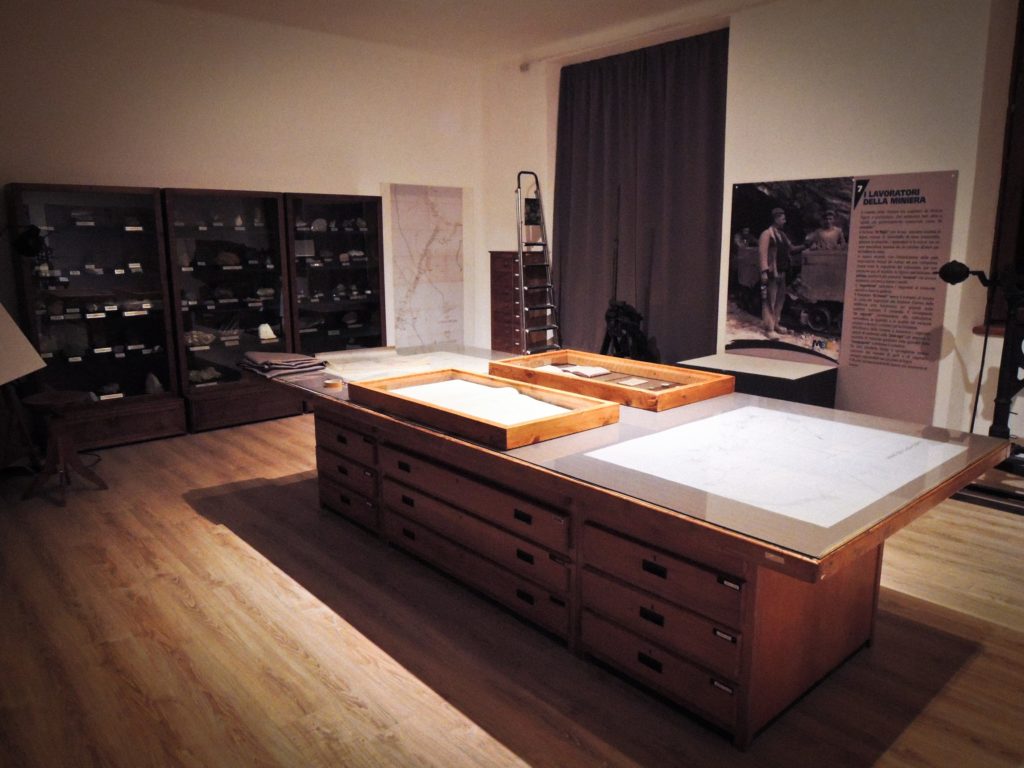
The Ethnographic Museum of the Upper Seriana Valley (MEtA) is divided into three exhibition sections, inspired by the history of the valley, seen through the people and the activities that have shaped the local communities over many centuries.
The complex is located in Piazza Monte Grappa, in Ardesio. Here you can delve into the history and life of the past, in a journey full of interesting testimonies.
At the entrance, a room introduces the museum itinerary, bringing the visitor closer to the knowledge of the Ardesio territory and the Upper Seriana Valley, also through a morphological model.
The museum is divided into three sections:
Spinning, weaving
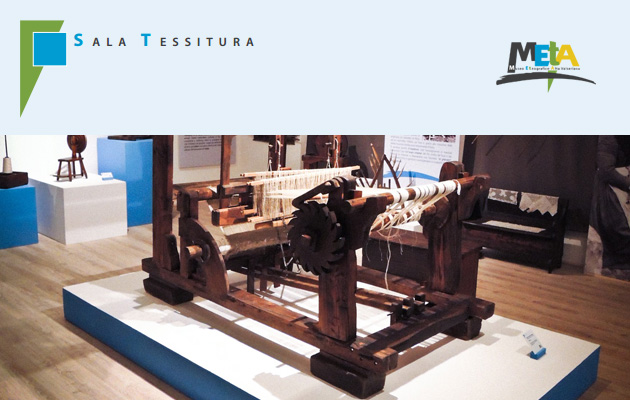
Old looms, spinning wheels, spinning wheels and other ancient tools tell the story of the women who, within the home, spun and weaved linen, hemp and wool. The first section of the museum is dedicated to them and to this typical work of the past, which was an indispensable element of the valley economy.
Lumberjacks and charcoal burners
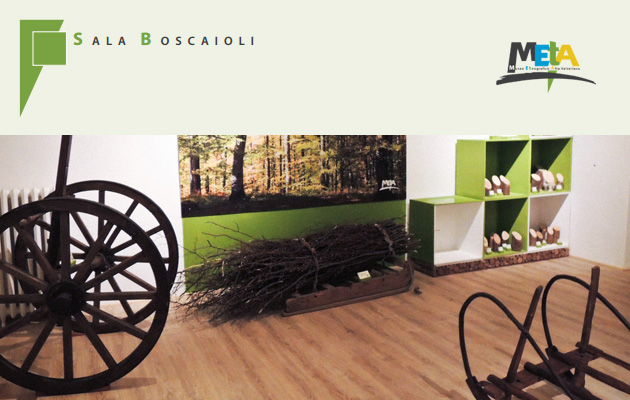
Here you can see the typical tools of forest work, with a single piece, the “màchina dè pörgà la rasa”; in a photographic section the faces of Slate men who practiced the important work of cutting wood for fire or as coal are portrayed.
Mines and miners
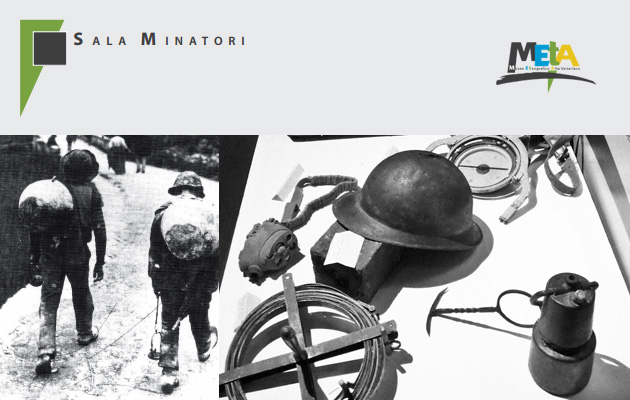
This section is undoubtedly the flagship of the museum. Here, in fact, there is one of the richest collections of tools, machinery and documents that testify to the ancient mining work, which was very important in these areas. An extractive activity that has marked the history of the Valley. There is a collection of maps of the Alta Val Seriana mining district, state archive.
Furthermore, in the recent reorganization, particular attention was paid to the suggestion of the mine. You can experience the thrill of entering a dark corridor, illuminated only by weak lights, which resemble the flames of cyanides. You can try to imagine the hard work of the men engaged in the miner’s work; of the taissine, skilled sorters of the mineral, and even of the “galècc”, the children.
The rural house
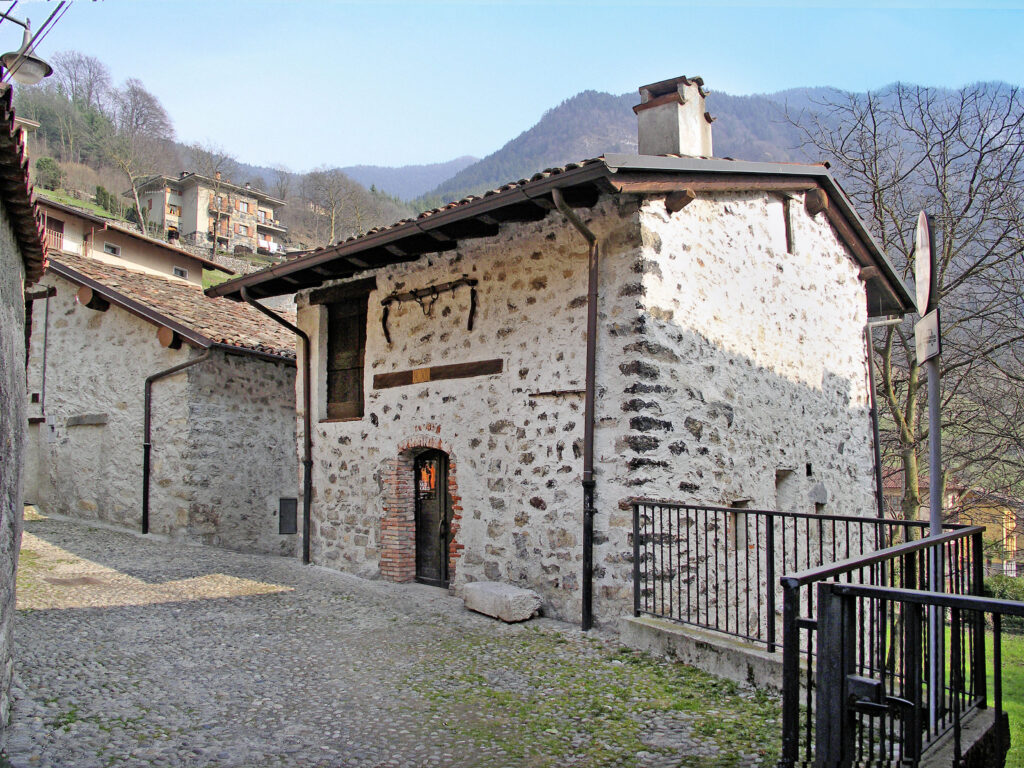
A few minutes from the museum, towards the center of the town, near the Sanctuary, in a fifteenth-century house there are settings of domestic life, craftsmanship and mountain agriculture. The typical rural house, like this one, was built with local materials, stones from nearby quarries and wood from the surrounding woods. In the basement there was the stable. From the outside it is now possible to see a medieval stone portal, while inside you can see the vault with the classic “silter” shape and a typical small window and railing. From street level, with direct access from via Torquato Tasso, you enter the kitchen, the main room of the house where there is also the fireplace, used more for cooking and processing milk than for heating.
The fireplace compartment is equipped with all the necessary iron tools: the chain for hanging the pots, the tripod, the grate, the shovel, the tongs. On the mantelpiece are lined up the jars of salt, pepper, sugar, matches and flint, the mortar, the lamp and the polenta stick.
Next to the fireplace we find a shelf equipped with iron hooks where pots, lids, buckets and branches are hung.
To the side, the “scànsia” is also hung on the wall, where there are wooden bowls and other crockery. Against the wall, there is a chest divided into two compartments: one for corn flour and one for wheat flour.
Near the window there is a walled stone sink under which the buckets of water were kept. In the center of the room there is a table with straw chairs and a bench completes the furnishings. Through a door you enter the bedroom of the parents and younger children. This room was furnished with a double bed with a horsehair or wool mattress and a chest for storing linen and clothes. The boys’ room, however, was furnished only by the bed and the chest and instead of the mattress there was the “paiù de scarfòi”, that is, the leaves that wrapped the dried corn cobs and collected in a canvas or linen sack or hemp.
